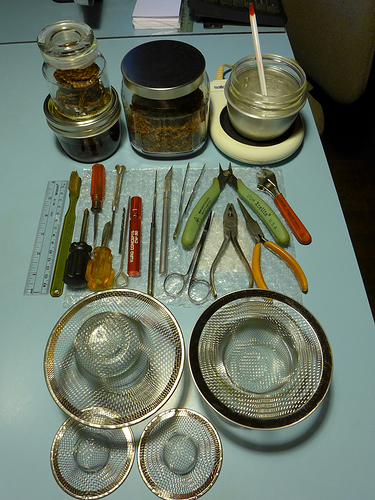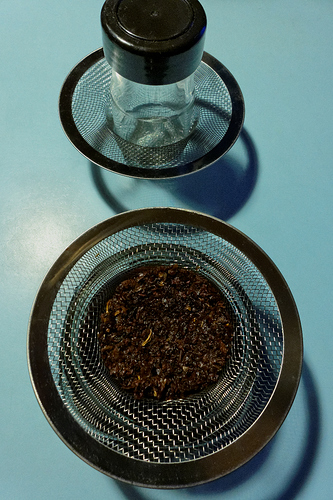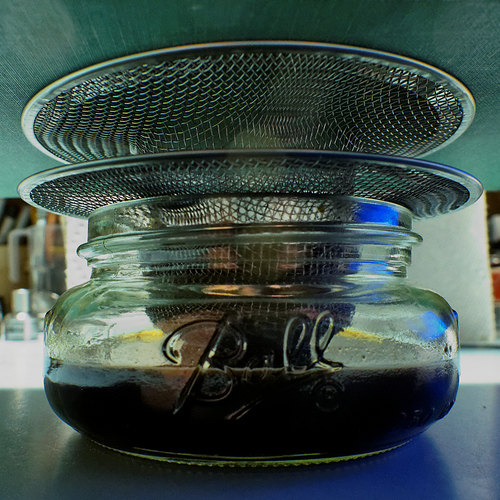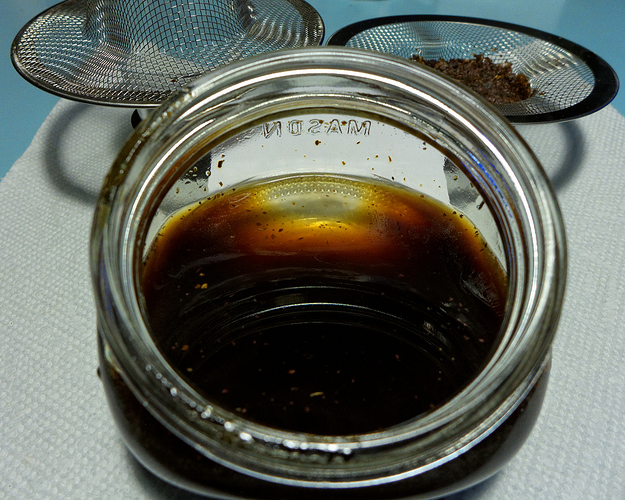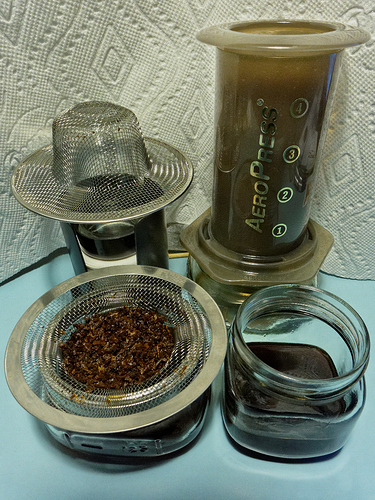[Note: Please pardon any typos. Will circumvent net-bot with reply-edits to correct any major ones.]
Thanks in no small part to Kinnikinnick’s kind and patient lending of his attention and time in our related communications, I’ve put together something of a process for NET extractions, and have emerged from initial runs with some nice and clean (and “not bad tasting”) results using the following blends:
D&R Windsail Regular (Virginia)
C&D Red Virginia Ribbon
PS Luxury Bullseye Flake
Tried various things, and find the overall process to (appear to) be fairly “forgiving” to deviations. Most resulted from my own inexperience and desire to explore my curiosities. One arose out of my limited quantity of PG relative to VG around, and my limited budget inspired me to try some PG/VG solvent blends, in addition to also trying PG-only. VG is slightly more “polar” than is PG - but its significantly higher viscosity (at room temps) observably results in less molecular mobility during the cold phase.
Used around 8 Hours time for one initial warm-phase (in the range of around 117 - 137 *F). My little coffee-cup warmer rig is a rather humble item, but I have learned its ways, and managed to use it in fairly hands-free operation over the warm-phase (periodically checking/tweaking temp, and stirring). My impression is that breaking-up the tobacco leaves used (resulting in more exposed surface area) is not problematic - given adequate post-filtering performed. Periodically stirring (with my glass thermo, or a small spoon) during the warm-phase maximizes distribution of the leaf-bits in solvent. Giving the jars a few good shakes once/twice per week throughout what has been 35 Day cold-phase times seems to be a good idea - as breaking up the leaf cell-wall structures is said to be a desirable goal to achieve.
The AeroPress is great. I have done filtering with the (~20 Micron pore-size) coffee filters that come with, followed by using some filter-paper that I had around (likely either a 6 or 7 Micron pore-size). It definitely helps to use some sort of lubricant on the inner walls of the cylinder (I used just a bit of VG). One thing noticed is that if one’s hand-cut filters fail to cover the entire area of the inner diameter of the removable bottom-piece (with the large holes in it), one can at some point lose the seal, and pressure, causing extract juice to well-up just a bit around the sides (not in the end lost). Those occurrences were not a big deal, however. Managed to adequately succeed, nevertheless. I will in the future be cutting (slightly) wider diameter filter disks (as recommended and shown in the post that I am replying to).
.
The above likely being familiar territory for most readers of this thread, I will describe a pre-filtering tool that I have tried and found to be very workable for my own purposes. I found some Blake & Croft Sink Strainers (2-pack set, 2 sizes included, the larger 11cm diameter, 3.5cm depth being the more useful item). They are an (approx) 14(per Inch)-mesh made of some type of stainless steel. Quite strong and sturdy for what they are. One-half Ounce of macerated leaf-bits fits perfectly into the straining area, and the depth works out very well in wide-mouth (standard, or the shorter “elite” shaped) 8 Oz mason-jars. The strainers (properly placed and pressed together) can take a rather significant amount of physical force. Only slight distortion of the mesh (at the very bottom/center of one) has occurred as a result.
Just a few small little bits of leaf parts made it through the initial pre-filtering straining. Not bad at all ! Not enough to interfere on the filter-paper with the following two filtering phases using AeroPress. Regardless of macerated leaf-bit size, the pre-filter processes went quickly and easily. What I like the most about the entire process used is that the extracts do not touch any unnecessary surfaces at all. The pre-filtered yield (juice-out/solvent-in) appears to be very high. Ditto following 2 more filterings.
Here’s a series of images that show my various extraction contraptions (both on break, and at work):
.
.
.
.
.
.
.
Many thanks to Kinnikinnick for his gracious assistance in my “maiden voyage” into NET realms !
![]() ) for about $5 each. On Amazon you can get one of these nice controllers and be in business for less than $20 including the rice !!!
) for about $5 each. On Amazon you can get one of these nice controllers and be in business for less than $20 including the rice !!!
